A trip to Sable Island June 2024
June 11, 2024 was the first landing of the SY Malla on Sable Island.
Captain’s Log - 240611
Anticipation was high as the forecast was looking perfect for the passage to Sable; southwest winds 25-40 kts and diminishing to 15-20 through the evening and overnight. The winds were forecast to drop to near nothing by 9am the next morning when we planned to make landfall.
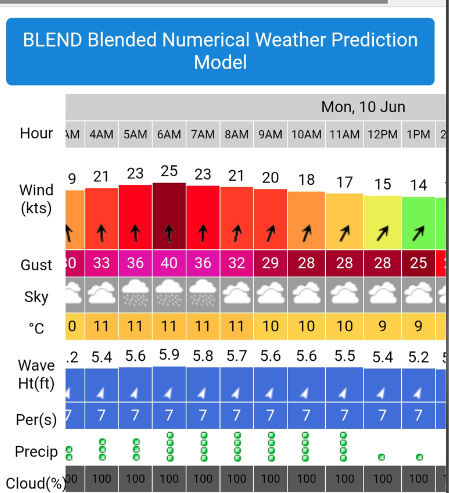
Departure from the NW Arm of Halifax Harbour was at 7am. The crew, Dave arrives the night before and his sister, Leslie, arrived at 0630. We dropped the mooring in the Northwest Arm of the Halifax Harbour and made way toward the North Atlantic with a favourable SW 18kt wind. As we motored out of the harbour we hoisted the sails just off Thrumcap shoal. We could not have asked for better weather as the skies were blue and the sails were full.
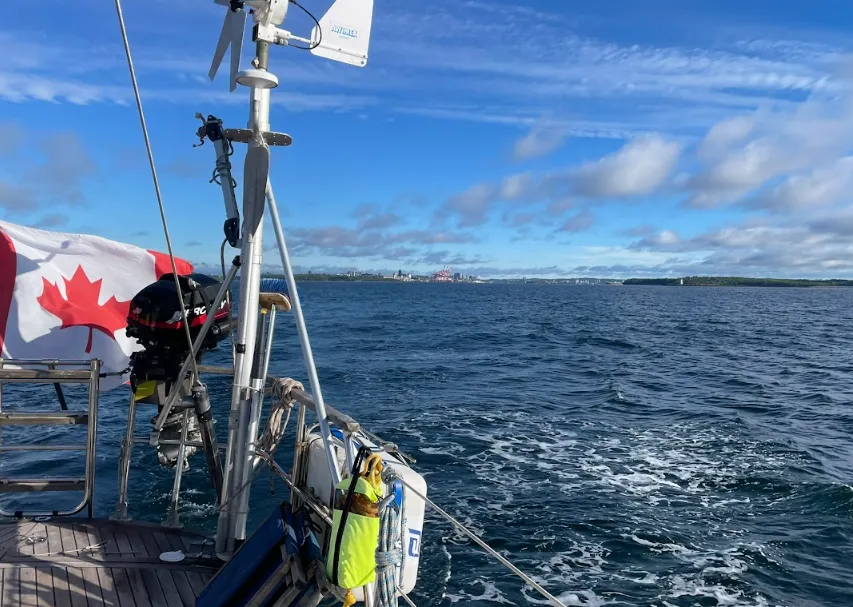 |
|---|
| SY Malla motoring out of the Halifax Harbour upon our departure |
The skies were clear ahead and the moral on board was high. We were averaging 8.5 knots of boat speed as we departed the Halifax approaches. The sailing in the morning was a lot like the sailing in the evening and we were able to maintain full speed through the whole day. It was one tack the whole way which made for a relaxing day on behalf of the crew. What a spectacular day of sailing!
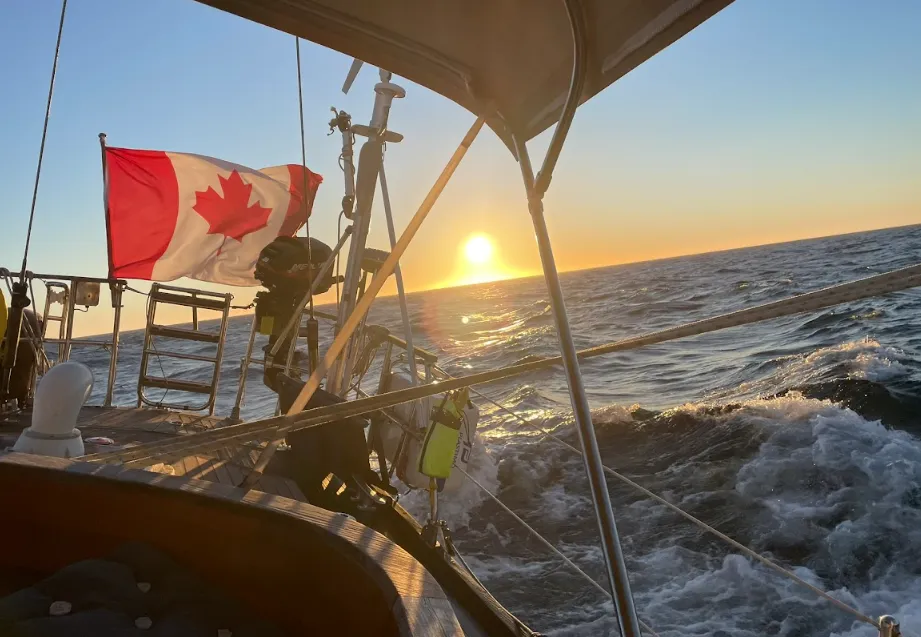 |
|---|
| SY Malla sailing through the sunset at 8.5kts. ETA to Sable Island is 3 hours ahead of schedule |
Conditions were consistent through the night. Sailing through the night can be a meditative experience. The sounds of the ocean and the expansive stargazing can make one think about life in different terms. Still dark as we were approaching Sable Island I could hear arctic terns chirping and flying near us for over an hour. They were leading us in to their home at Sable Island.
We sighted Sable Island at 0400 the next morning. The wind died down as the sun came up at an early rising of 0430. It was a special sight to see the island for the first time.
A vistor by sea is required to hail Sable Island Parks staff on channel 8 on the VHF when you are 10 miles out. I tried to raise the park staff at 0300 when we were 10 nautical miles from the West Spit. I was not surprised when we had no response.
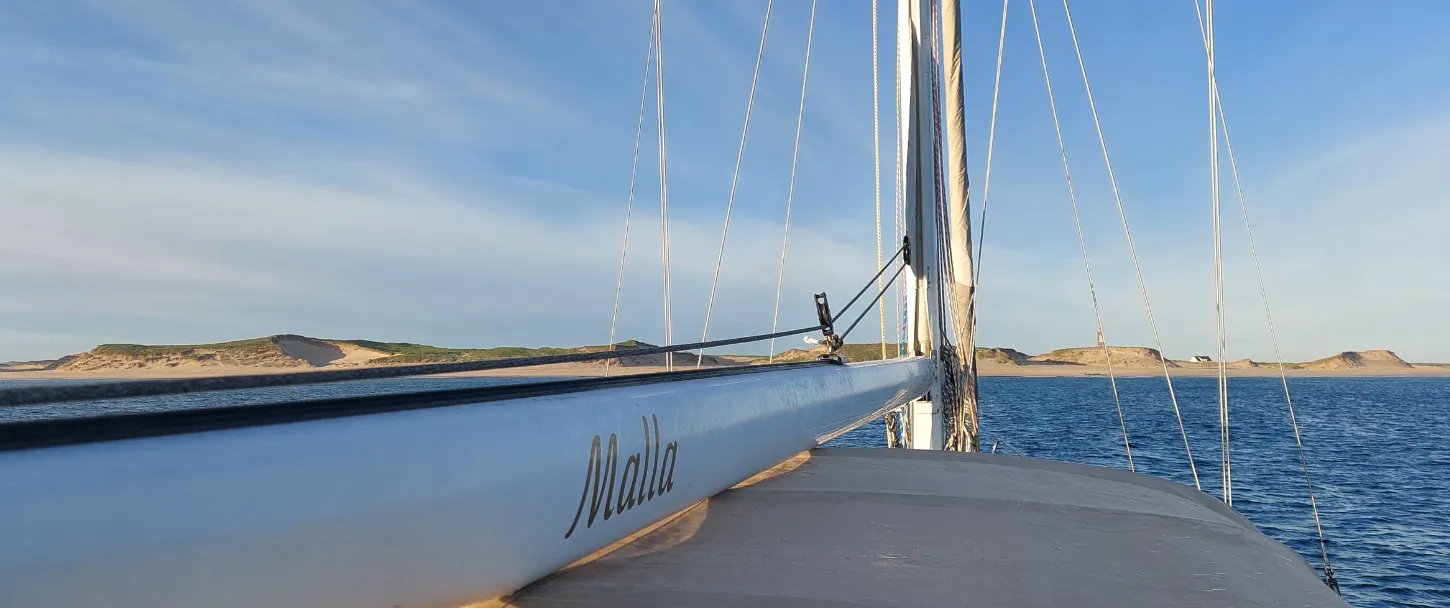 |
|---|
| SY Malla anchored at Sable Island off the north beach and the main station awaiting instructions from Parks Canada |
We dropped anchor at the required longitude (60.01 W) adjacent to the main station on the north side of the island. We anchored in 15 ft of water which was about 500m offshore. We enjoyed the sunrise and caught a quick nap.
The sights were spectacular. The dawn sun shining on the sea and dune was something we will not forgot. We were all very excited to get to the island.
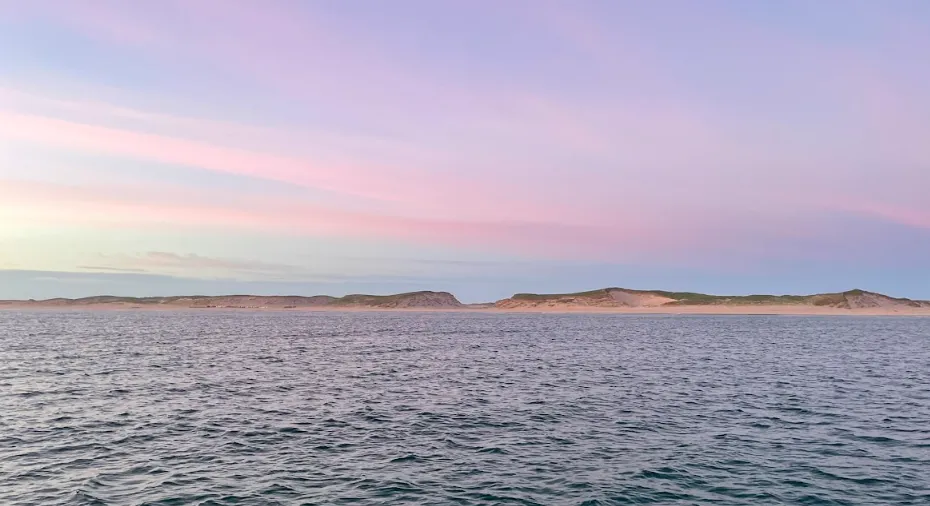 |
|---|
| Early morning colours of Sable Island |
We made contact with Parks employee Audrey Levesque at 0800 to arrange for a 0900 beach landing. We dropped the rigid hull inflatable boat (RIB), mounted the 10hp outboard motor, and loaded up our gear for the adventure ahead.
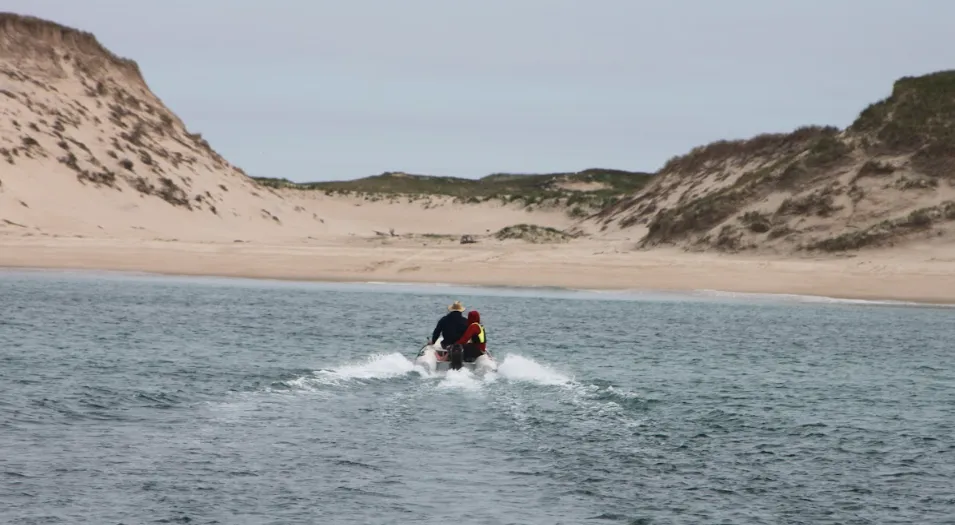 |
|---|
| Dave and Andrew making landfall in the RIB |
The landfall went as smooth as it could possibly go and landed on the beach with no issues. Audrey and Parks Canada was there to greet us as we hauled the RIB up out of the tidal zone. Audrey advised us that during her tenure we had just made the fastest passage by sailboat from Halifax that she has seen; 21 hours. It was a good omen for Malla’s first voyage to Sable Island.
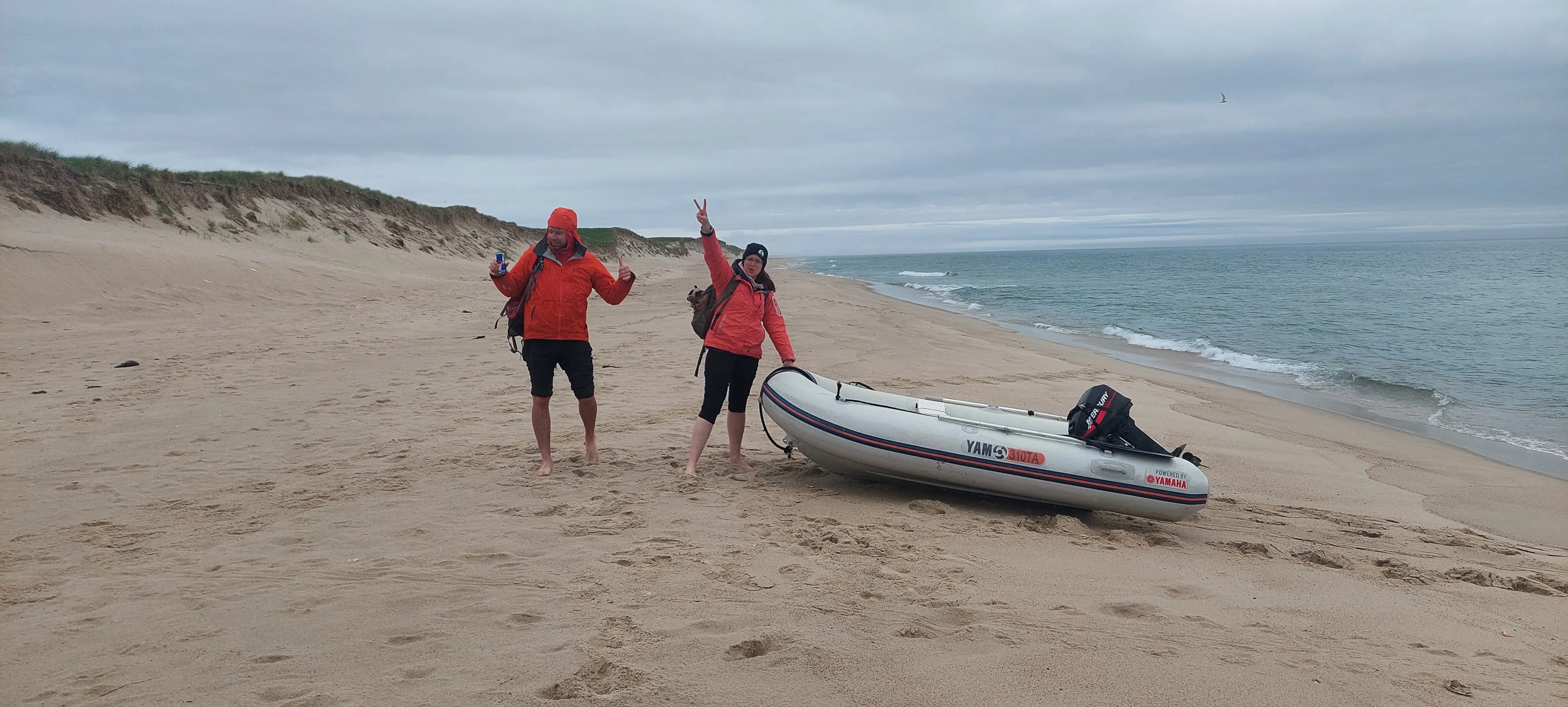 |
|---|
| Leslie and Dave stoked to be on the island for the first time |
The Parks Canada staff packed us up into a Jeep and drove us through the dunes to the main station. We were able to purchase some Sable Island swag which is exclusive and only available on the island. That makes it special every time I take a sip out of my Sable Island mug!

At the main station, there was a display case that housed many artifacts and bones found around the island. The walrus skull definitely caught my eye. Unfortunately, they are long extinct to the area. The walruses used to have a breeding colony here, but there were hunted to extinction 300 years ago for their ivory and meat. The population between Sable Island, PEI, the Magdalenes, and the Gulf islands was over 100 000.
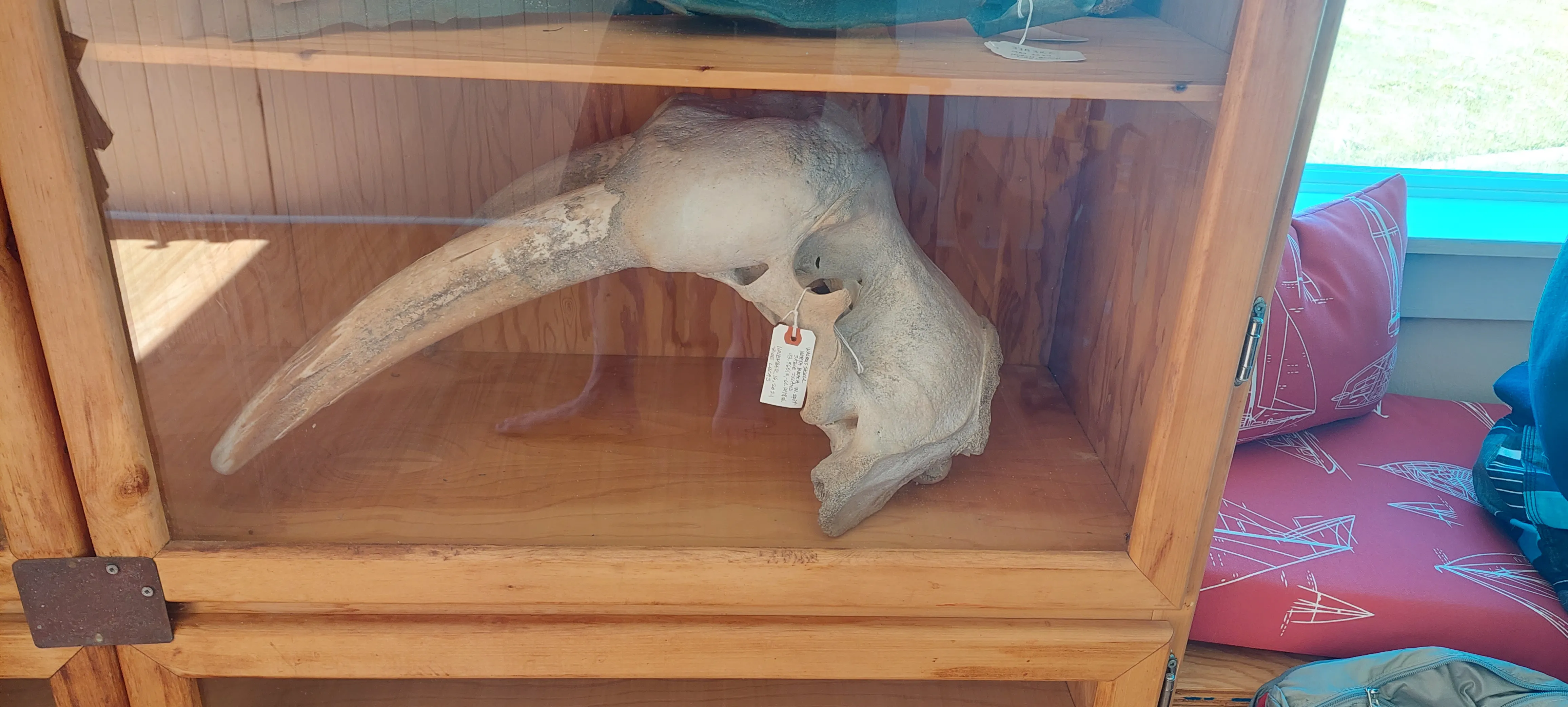 |
|---|
| Walrus skull found on the North Beach in 2021. Heavy exploitation throughout the 1600s and 1700s resulted in the extirpation of Walrus from the Sable Island area by the end of the 18th century. A substantial Walrus fishery existed at Sable Island at least until the mid-1600s. |
After our visit to the main station Parks employee, Audrey, showed us around the main station for a couple hours showing us all the hot spots and getting us acquainted with the island and its flora and fauna.
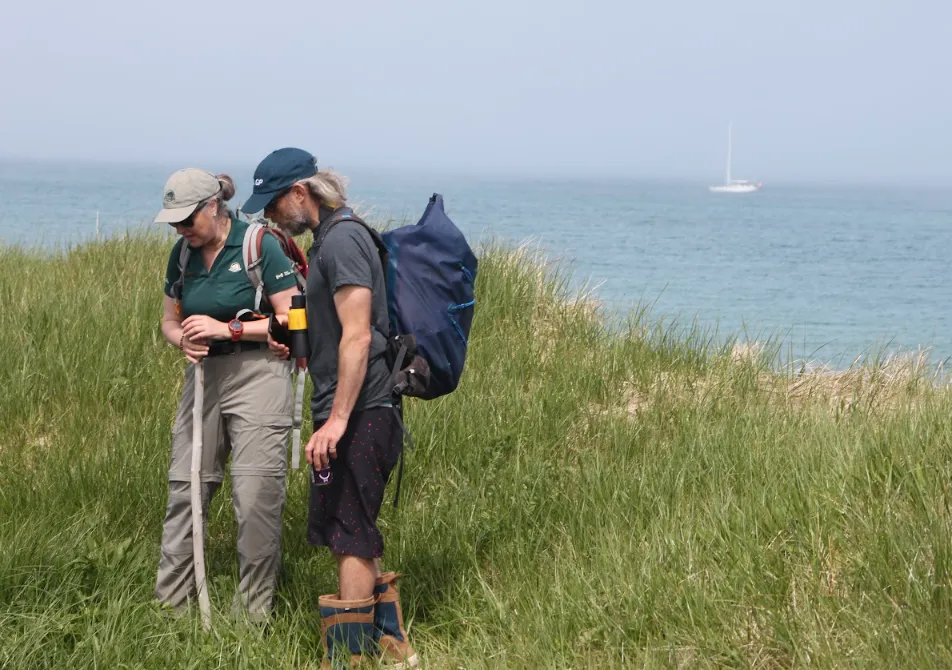 |
|---|
| Audrey describing the varieties of flora on the island |
One of the first spots any visitor will check out is “Shanghri La” which is a grassy fresh water pond area where you are almost guaranteed to see horses.
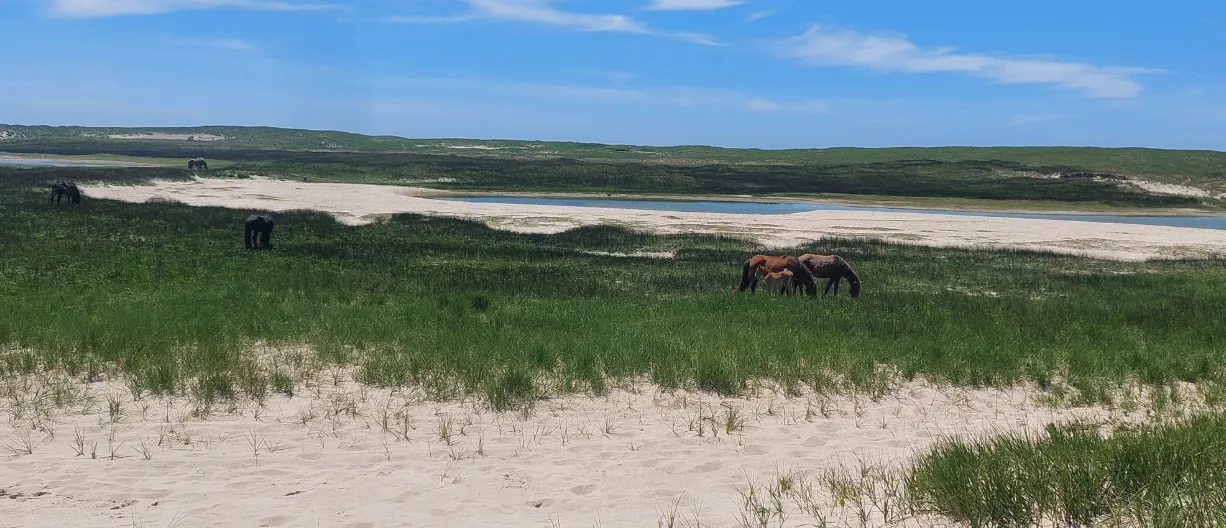 |
|---|
| Western band of horses at Shanghri La |
After we explored around the main station we had some lunch in the sun on the dune above Shanghri La and then made our way back to the boat to wiegh anchor and sail further east down the island to Bald Dune. We were underway for about an hour before it was time to set anchor again. We made landfall flawlessly (thanks to the southerly winds and swell) for the second time and embarked on our hike up to the dune. We encountered horses here as well.
Something I found very interesting on the island is that the eastern horse bands do not interact with the western bands. I felt priviledged to be able to see the eastern horse bands as most visitors only see the western bands. It is something unique about visiting the island via boat in that you can see the whole island and multiple horse bands during your visit.
The horses were about a kilometer down the beach when we made landfall and they quickly picked up a trot to come visit us. We stepped back as they approached as its required to stay further than 20m from them. They were very interested in us and continued to look at us in awe, just as we did them. Not many visitors come to this part of the island so I can expect they have not seen very many, if any, humans.
After our encounter with the horses we hiked Bald Dune to the highest point on the island. A spectacular location. We could see almost to the end of both sides of the island. As we were walking up it felt like walking in the high alpine, or I suppose a desert. I have more experience in the high alpine than the desert so that is what I compared it with. All sand and no grass or trees as reference points. I loved the experience. The 360 views from the top were unreal!
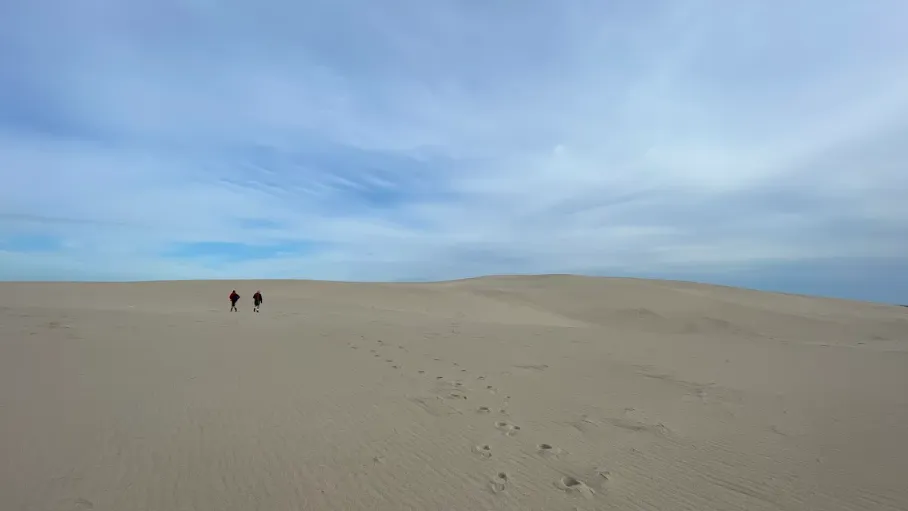 |
|---|
| Andrew and Dave hiking up Bald Dune |
After hiking down from the dune we made our way back to the boat. On the way we saw a large band of horses running down the beach near a pack of seals. One of the many special things about Sable Island is how the land animals all live in peace with one another. There are no predators on the island (the sea, of course, is another story). The horses, seals, and birds just do their own thing. The look and observe one another with a level of respect and calmness that is not noticed on the mainland. They walk, fly, and shuffle by one another without making any fuss. I can imagine they enjoy seeing one another as neighbors and friends which, for the horses at least, helps them stave off a sort of loneliness on the island.
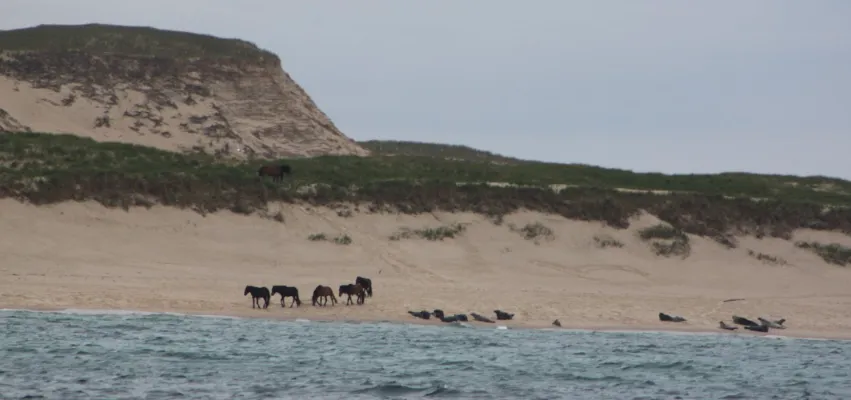 |
|---|
| Wild horses and seals living in harmony |
We did witness some horses tustle (this makes for some good photos!), and I’m sure the seals have a bit of infighting as well, but did not see it. As we were departing the island before our first night, we saw a band of horses with a few males having some fun, or a fight. It was magical to see them sprinting down the north beach.
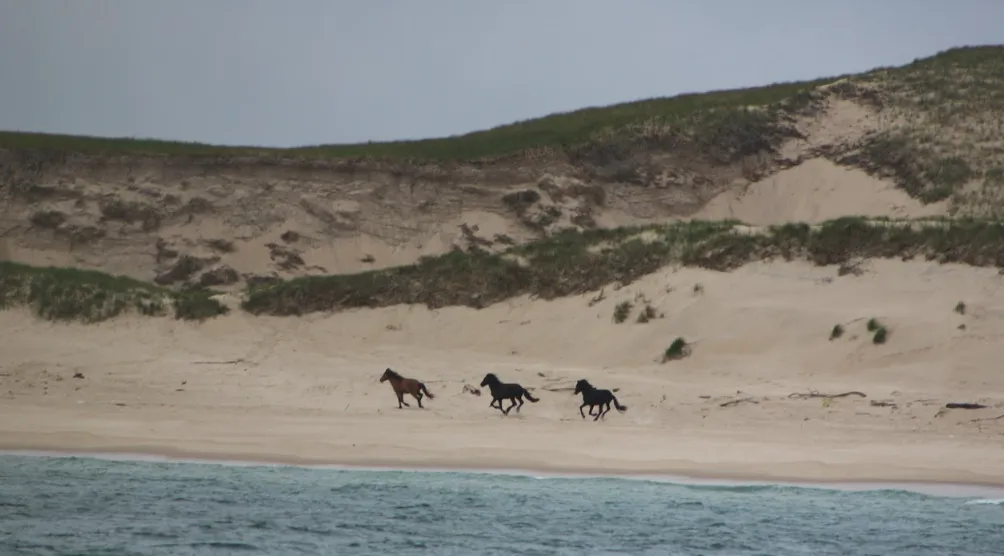 |
|---|
| An Eastern band of horses playfully running down the beach after a short tustle |
We were prepared to leave after one day on the island but instead stayed on anchor for the night as the conditions were perfect. A light south wind with no swell made for a comfortable night on anchor. I was surprised as it was one of my first well open roadsteads, or actually completely open ocean anchorages and it was very pleasant. After an epic taco dinner, we had a celebratory drink and hit the bunks just after sundown. What a perfect day!

The next morning we awoke to a wet day. The wind was forecast to turn north later in the afternoon so it was the day to depart. A north wind would create a lee shore, chop, and swell that are dangerous and uncomfortable on the north side of the island. Before the wind turned we mustered up the motivation to brave the wind and rain and head back to another exploratory mission.
We made landfall near the Skidby shipwreck. The Skidby was a steamship that met her doom on the north sandbanks of Sable in January, 1905. The wreck is underwater about 5-6 feet near the low water mark of the beach. We motored almost over it but the high number of seals kept us away. The seals were very curious of us. We kept our distance.
 |
|---|
| This is the Skidby shipwreck in 1910. Photo from collectionscanada.gc.ca |
With the shifting sand dunes, you will always have a chance to discover some artifact on the island (Note that no one is allowed to take or move any artifacts off the beach). That is what makes coming back here so intriguing. We were on sharp lookout for any anomolies on the beach as we made our way to the latest wreck on the island, the Merrimac, which is a small sailboat that struck the south beach of the island in 1999. The Sable Island map provided by Parks Canada showed the location of the Merrimac so we made our way from the North to the South side. On our way we saw a band of horses so we altered our route to the west to get a closer look. There were some handsome looking horses around grassy mounds. As we were taking some photos I noticed something that looked manmade. As I wandered over I saw immediately that it was the bulkhead of a sailboat buried in the sand. You could see the gunwale with some blue paint, the rail, and a digital course display mounted on the bulkhead. This was for sure the Merrimac however it was quite a bit further west than what was showing on the official Sable Island NPR map. I marked the location on my GPS and advised Parks Canada of the location. They told me that likely we would be the only visitors to that area in 2024 and thanked us for the information.
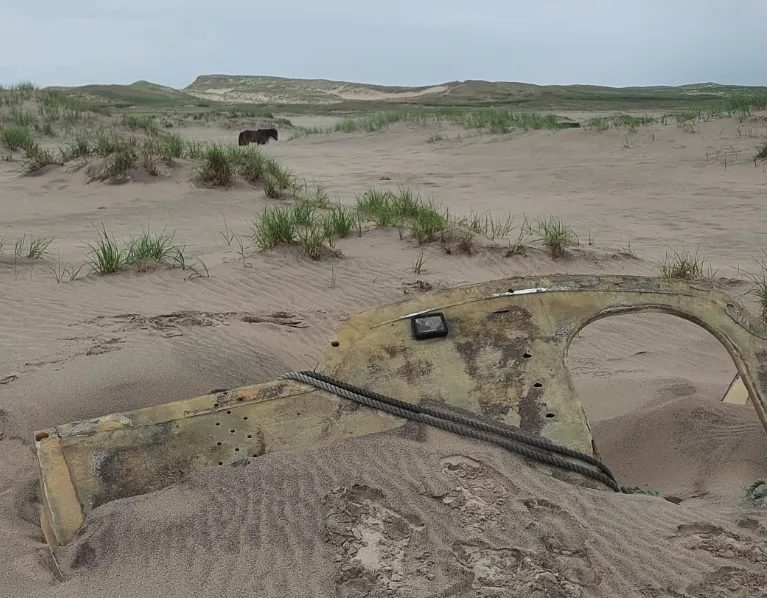 |
|---|
| Wreck of the sailing vessel Merrimac. Located west of the official Sable NPR map location in an area of isolated grassy dunes of the south beach |
By this time we were getting quite wet from the rain. We decided to head back to the boat and start our passage back to Halifax by mid-afternoon. We arrived back at the boat just in time for the north wind kick in. It was time to leave. As we weighed anchor we hailed the parks staff on VHF Ch. 8 and advised them of our departure.
As we hoisted the sails, the skies were grey with the sun poking through. We had the heater on to help dry us out. We sat in the main saloon of the boat as we sailed on autopilot back for Halifax joyfuly reminising on the amazing adventure we had just experienced. The 20 more hours of sailing ahead went smoothly and we arrived in Halifax the next day at 1630. Just in time for happy hour.
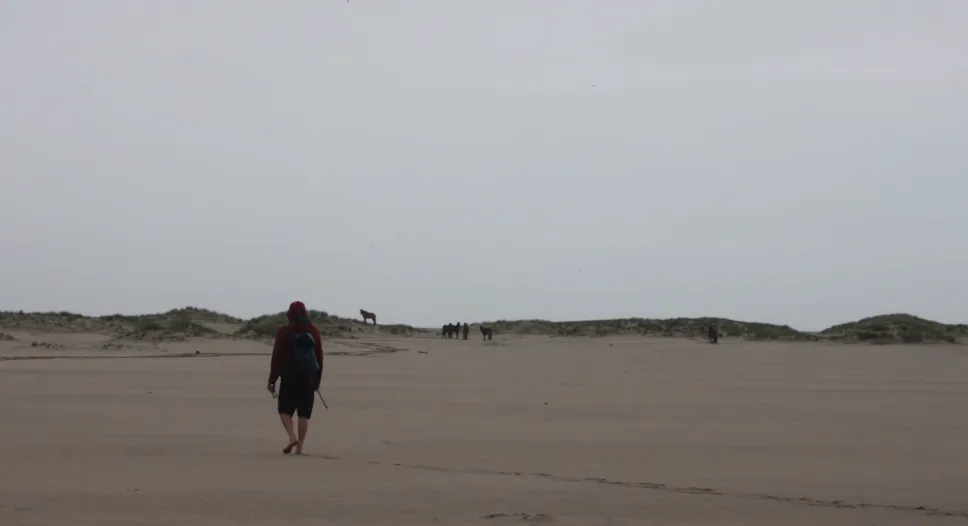 |
|---|
| Andrew walking down the expansive South Beach |
Until next adventure - Andrew M. Bruce signing out